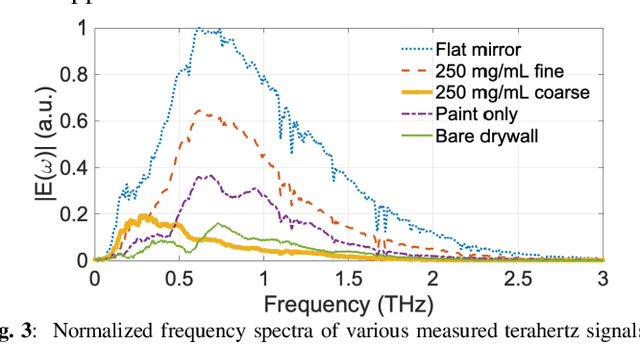Russ Messenger
Analysis and Empirical Validation of Visible Light Path Loss Model for Vehicular Sensing and Communication
Jan 09, 2023Abstract:Advancements in lighting systems and photodetectors provide opportunities to develop viable alternatives to conventional communication and sensing technologies, especially in the vehicular industry. Most of the studies that propose visible light in communication or sensing adopt the Lambertian propagation (path loss) model. This model requires knowledge and utilization of multiple parameters to calculate the path loss such as photodetector area, incidence angle, and distance between transmitter and receiver. In this letter, a simplified path loss model that is mathematically more tractable is proposed for vehicular sensing and communication systems that use visible light technology. Field measurement campaigns are conducted to validate the performance and limits of the developed path loss model. The proposed model is used to fit the data collected at different ranges of incident angles and distances. Further, this model can be used for designing visible light-based communication and sensing systems to minimize the complexity of the Lambertian path loss model, particularly for cases where the incident angle between transmitter and receiver is relatively small.
Dispersion from Diffuse Reflectors and its Effect of Terahertz Wireless Communication Performance
Apr 01, 2021



Abstract:This work investigates the temporal dispersion of a wireless terahertz communication signal caused by reflection from a rough (diffuse) surface, and its subsequent impact on symbol error rate versus data rate. Broadband measurements of diffuse reflectors using terahertz time-domain spectroscopy were used to establish and validate a scattering model that uses stochastic methods to describe the effects of surface roughness on the phase and amplitude of a reflected terahertz signal, expressed as a communication channel transfer function. The modeled channel was used to simulate a quadrature phase shift keying (QPSK)- modulated wireless communication link to determine the relationships between symbol error rate and data rate as a function of surface roughness. The simulations reveal that surface roughness from wall texturing results in group delay dispersion that limits achievable data rate with low errors. A distinct dispersion limit in surface roughness is discovered beyond which unacceptable numbers of symbol errors begin to accrue for a given data rate.
 Add to Chrome
Add to Chrome Add to Firefox
Add to Firefox Add to Edge
Add to Edge